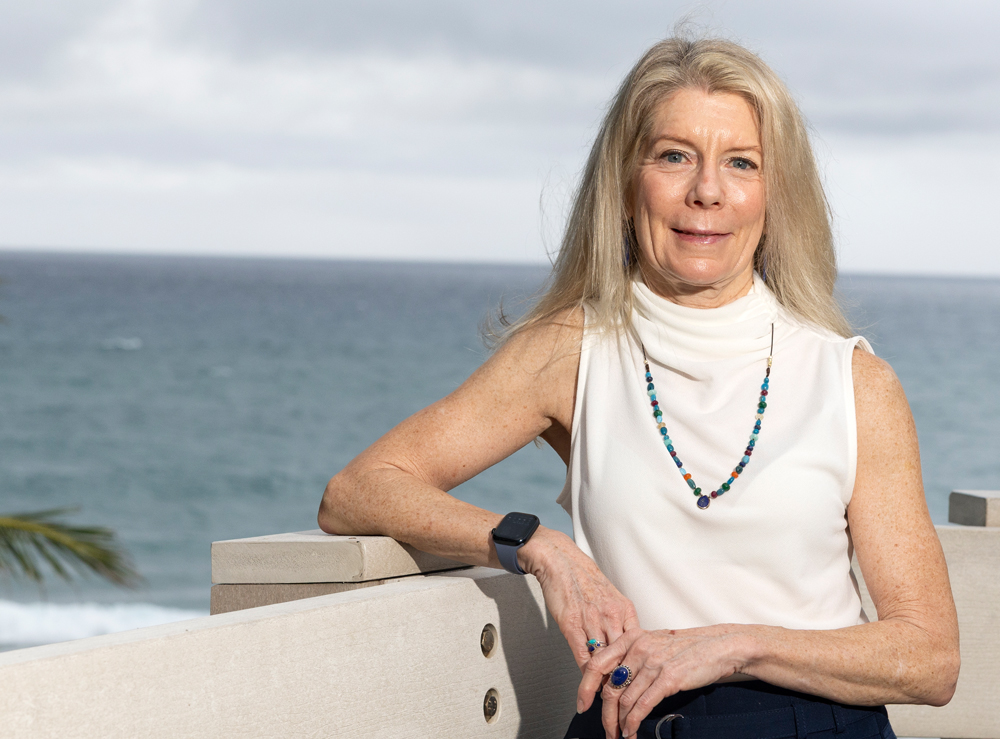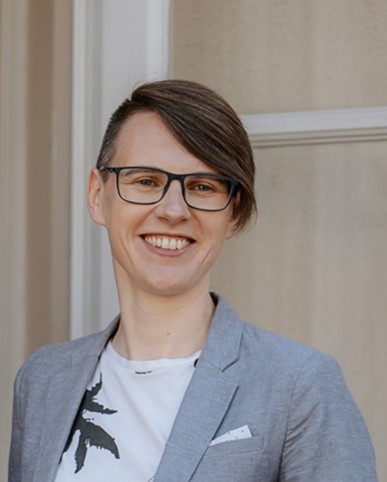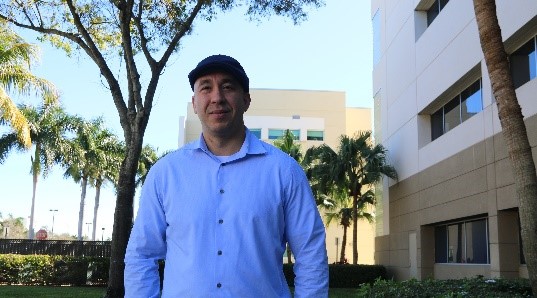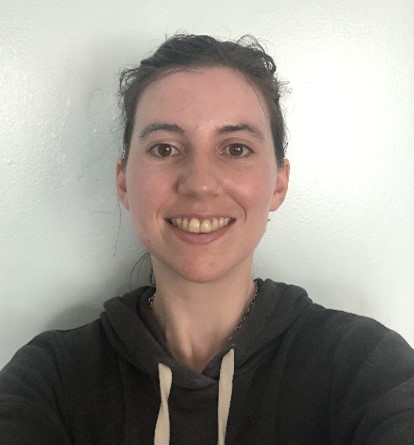
I am involved in developing modeling approaches that mechanistically link the impacts of toxic chemicals and other stressors across levels of biological organization. Whereas it is increasingly feasible to generate huge amounts of data on the effects of chemicals at the molecular and cellular levels of organization, the consequences of such effects for things we care about (e.g., persistence of populations, ecosystem service delivery) are rarely straightforward. This is where modeling can help. I collaborate extensively with researchers from industry, government, and academia and from multiple European countries and North America. Much of our work in recent years has focused on developing guidance for good modeling practice, together with case studies, to demonstrate how mechanistic models can add value to regulatory risk assessments, thereby improving decisions and policies related to managing chemicals and other stressors. For example, we recently published a web app to standardize conceptual model diagrams for population models used in ecological risk assessment (https://pop-cmd.com/)
Currently, I am collaborating with colleagues from Syngenta Crop Protection to develop traits-based approaches to inform population modeling of species listed as threatened or endangered under the Endangered Species Act. Our current work focuses on freshwater mussels, one of the most endangered groups of animals in North America. Their decline in abundance is concerning because mussels play essential roles in freshwater ecosystem services, including supporting and regulating services such as nutrient recycling and storage, structural habitat provision, biofiltration, and water purification. Freshwater mussels have very complex life cycles, including a larval stage (glochidia) that requires a fish host for larvae to develop into independent juveniles. Since data for listed mussel species are limited, we are using traits-based approaches to identify suitable non-listed species as surrogates for population modeling to inform risk assessments and recovery planning.
In addition, I am currently collaborating with scientists from University of Massachusetts Medical School, University of Nevada Los Vegas, and the Broad Institute on a 5-year NSF-funded project (Epigenetic pathways to regulate homeostatic resilience: Model-based discovery of rules across diverse mammals). We are applying a common-garden framework to cultured cells from diverse mammals to uncover epigenetic responses that render cells of diverse species robust to variation in the cellular environment. RNA-seq, ATAC-seq, and cellular morphology and physiology are being used to assay the responses of cells from different species when exposed to a panel of variable oxygen, glucose, and temperature conditions. By analyzing these datasets using new comparative computational approaches within an evolutionary framework, the project will identify genes involved in strictly homeostatic versus flexible cell phenotypes. These genes will be modeled as “agents” in an agent-based modeling approach to distinguish between a "driver" hypothesis, with robustness coordinated by a few epigenotypes of large effect, or the alternate "small-impact" hypothesis, with robustness arising from many epigenotypes of individually small effect, and between the possibility of few versus many evolutionary paths to a given phenotype of homeostatic robustness.
Haberle, Ines. Using ecological models for pesticide risk assessment of listed species and evaluating the effectiveness of mitigation & recovery actions: An application to freshwater mussels. (FAU & Syngenta Postdoc; January 2024 – Current)

Research interests: Ecological Modeling, Dynamic Energy Budget Theory, Mathematical Biology, Aquatic Ecology, Species Distribution, Conservation, Sustainability, Bioresources Management, Climate Change
Email: ihaberle@fau.edu
ResearchGate: https://www.researchgate.net/profile/Ines-Haberle
Google Scholar: https://scholar.google.com/citations?user=VFu_93kAAAAJ&hl=en
Gonzalez, Jorge. Mathematical approaches to discovering epigenetic rules of homeostasis in diverse mammal species (FAU Postdoc; August 2023 – Current)

Research interests: Dynamical Systems, invariant manifolds, Bifurcation Theory, Perturbation Theory, ODE, PDE, computer-assisted proofs, Computational Topology, numerical methods, optimization, mathematical modeling, Celestial Mechanics, Fluid Dynamics, Mathematical Biology, Computational Neuroscience, cognitive modeling, Machine Learning, stochastic processes, network traffic, Percolation Theory.
Email: jorgegonzale2013@fau.edu
Website: https://joluigonza.github.io
Crouse, Kristin. Collaborative Research: URoL: Epigenetics 2: Epigenetic pathways to regulate homeostatic resilience: Model-based discovery of rules across diverse mammals (NSF Postdoc; Jan 2022 – Current)

Research interests: agent-based modeling, animal behavior, primatology, ecology, epigenetics
Email: crou0048@umn.edu
CoMSES profile (where you can download my models): https://www.comses.net/users/1768/
University of Minnesota profile: https://experts.umn.edu/en/persons/kristin-n-crouse
ResearchGate profile: https://www.researchgate.net/profile/Kristin-Crouse
GoogleScholar publications: https://scholar.google.com/citations?user=TDnSF-8AAAAJ&hl=en
Minnesota Zoo monkey videos: https://www.youtube.com/playlist?list=PL53DLxqn8EPyQnv2BF75otVgpUAAVSVA9
Forbes VE. 2024. The need for standardization in ecological modeling for decision support: Lessons from ecological risk assessment. Ecol Model https://doi.org/10.1016/j.ecolmodel.2024.110736
Xie L, Slotsbo S, Ilyaskina D, Forbes VE, Holmstrup M. 2024. Chronic effects of an insect growth regulator (teflubenzuron) on the life cycle and population growth rate of Folsomia candida. Environ Toxicol Chem. DOI: 10.1002/etc.5850
Brain R, Forbes VE. 2024. Improving the FIFRA/ESA process by addressing key obstacles and incorporating better data and tools. Council for Agricultural Science and Technology. cast-science.org/FIFRA_ESA_essay-3-1.
Forbes VE, Accolla C, Banitz T, Crouse K, Galic N, Grimm V, Raimondo S, Schmolke A, Vaugeois M. 2023. Mechanistic Population Models for Ecological Risk Assessment and Decision Support: The Importance of Good Conceptual Model Diagrams. Integr Environ Assess Manage. https://doi.org/10.1002/ieam.4886
Crouse K, Accolla C, Banitz T, Galic N, Grimm V, Schmolke A, Vaugeois M, Forbes VE. 2023. Pop-CMD web app user manual. DOI: 10.13140/RG.2.2.30490.62408.
Accolla C, Schmolke A, Jacobson A, Roy C, Forbes VE, Brain R, Galic N. 2022. Modeling pesticide effects on multiple threatened and endangered Cyprinid fish species: the role of life-history traits and ecology. Ecologies 3:183-205.
Raimondo S, Forbes VE. 2022. Moving beyond risk quotients: advancing ecological risk assessment to reflect better, more robust and relevant methods. Ecologies 3: 145-160.
Vaugeois M, Venturelli PA, Hummel SL, Forbes VE. 2022. Population modeling to inform management and recovery efforts for lake sturgeon, Acipenser fulvescens. Integr Environ Assess Manage DOI: 10.1002/ieam.4578
Jang J, Forbes VE, Sadowsky MJ. 2022. Probable role of Cutibacterium acnes in the gut of the polychaete Capitella teleta. Sci Total Environ 809: 151127.
Nielsen M, Vavra J, Palmqvist A, Forbes VE. 2022. Long-term effects of sediment-associated silver nanoparticles and silver nitrate on the deposit-feeding polychaete Capitella teleta. Aquat Toxicol 242: 106046.
Rueda-Cedial P, Galic N, Brain R, Pinto-Ledezma J, Rico A, Forbes, VE. 2022. Using life-history trait variation to inform ecological risk assessments for threatened and endangered plant species. Integr Environ Assess Manage 19: 213-223.
Moore A, Galic N, Brain R, Hornbach D, Forbes VE. 2021.Validation of freshwater mussel life-history strategies: A database and multivariate analysis of freshwater mussel life-history traits. Aquat Conserv:Marine and Freshwater Ecosystems 31:3386-3402.
Raimondo S, Schmolke A, Pollesch N, Accolla C, Galic N, Moore A, Vaugeois M, Rueda-Cediel P, Kanarek A, Awkerman J, Forbes VE. 2021. Pop-GUIDE: Population modeling Guidance, Use, Interpretation, and Development for Ecological Risk Assessment. Integr Environ Assess Manage 17: 767-784.
Accolla C, Vaugeois M, Grimm V, Moore AP, Rueda-Cediel P, Schmolke A, Forbes VE. 2021. A review of key features and their implementation in unstructured, structured, and agent-based population models for ecological risk assessment. Integr Environ Assess Manage 17: 521-540.
Vaugeois M, Venturelli PA, Hummel SL, Forbes VE. 2021. A simulation-based evaluation of management actions to reduce the risk of contaminants of emerging concern (CECs) to walleye in the Great Lakes Basin. Sci Total Environ 768: 144326.
Forbes VE, Agatz A, Ashauer R, Butt KR, Capowiez Y, Duquesne S, Ernst G, Focks A, Gergs A, Hosson ME, Holmstrup M, Johnston ASA, Meli M, Nickisch D, Pieper S, Rakel KJ, Reed M, Roembke J, Schafer RB, Thorbek P, Spurgeon DJ, van den Berg E, van Gestel CAM, Zorn MI, Roeben V. 2021. Mechanistic effect modeling of earthworms in the context of pesticide risk assessment: Synthesis of the FORESEE Workshop. Integr Environ Assess Manage 17:352-363.
Accolla C, Forbes VE. 2021. Temperature dependence of population responses to competition and metabolic stress: An agent-based model to inform ecological risk assessment in a changing climate. Sci Total Environ 763: 144096.
Jang J, Hochstein R, Forbes VE, Sadowsky M. 2021. Bioturbation by the marine polychaete Capitella teleta alters the sediment microbial community by ingestion and defecation of sediment particles. Sci Total Environ. 752: 142239.
Grimm V, Johnston ASA, Thulke H-H, Forbes VE, Thorbek P. 2020. Three questions to ask before using model outputs for decision support. Nature Communications 11: 4959.
Jang J, Forbes VE, Sadowsky M. 2021. Lack of evidence for the role of gut microbiota in PAH biodegradation by the polychaete Capitella teleta. Sci Total Environ 725: 138356
Vaugeois M, Venturelli P, Hummel S, Accolla C, Forbes VE. 2020. Population context matters: Predicting the effects of metabolic stress mediated by food availability and predation with an agent- and energy budget-based model. Ecol Model 416: 108903.
Accolla C, Vaugeois M, Rueda-Cediel P, Moore A, Marques G, Marella P, Forbes VE. 2020. DEB-tox and Data Gaps: Consequences for individual-level outputs. Ecol Model 431: 109107.
Awkerman J, Raimondo S, Schmolke A, Galic N, Rueda-Cediel P, Kapo K, Accolla C, Vaugeois M, Forbes VE. 2020. Guidance for developing amphibian population models for ecological risk assessment. Integr Environ Assess Manag 16:223-233.
Goto D, Hamel M, Hammen J, Rugg M, Pegg M, Forbes VE. 2020. Divergent density feedback control of migratory predator recovery following sex-biased perturbations. Ecol Evol 10: 3954 – 3967.
Forbes VE, Calow P. 2020. How contaminants affect population dynamics. In: MC Newman (ed). Fundamentals of Ecotoxicology, 5th edn. CRC, Boca Raton, FL. Pp. 321-325.